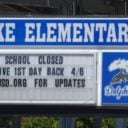The number of Americans who will lose their health insurance plans, according to the media reports, is wrong. Two articles in Forbes predicted health insurance cancellations for 93 million and 130 million (at least), respectively. People’s Pundit Daily has been predicting big numbers for weeks and, according to our numbers, the current media figures are far too low.
These predictions, though we are happy others have entered our ballpark, were sadly predictable if you actually read ObamaCare, or the so-called Affordable Care Act. PPD has argued the act is designed to throw people with both private individual, non-group health insurance plans and employer-sponsored insurance off of the rolls, and into the collective high risk pool.
The two primary reasons Americans are receiving cancellation notices, which will be detailed shortly, when taken in concert suggests President Obama and the Democrats were not only lying to the American people, but methodically attempting to increase so-called “standards” until insurers were forced to terminate a sufficient number of policies.
The “minimum actuarial value,” or the first reason for the cancellations, was established by ObamaCare at 60 percent. In other words, plans must cover 60 percent of covered expenses for a typical plan member, leaving the rest to be paid out of pocket. But that wasn’t enough for the administration, because too many private plans easily met that threshold, which leads us to the second reason for cancellations.
“Essential Health Benefit Standards” are the minimum categories of health insurance coverage that every qualified health insurance plan must have, beginning January 1 of 2014. Alone, the categories are ludicrous, but the negative impact from these requirements are further exacerbated due to the fact some states may have broader requirements for Essential Health Benefits.
There are 189 million Americans with private health insurance coverage, of which 18.1 million are non-elderly Americans with individual (non-group) coverage and 170.9 million with employer-sponsored insurance, including workers and their dependents. For the purposes of this study, and in the interest of accuracy when determining compliance with the law, we broke up insured Americans in to three groups.
First, we took a look at private individual, non-group health insurance plans. Next, which was vital when determining compliance, we broke employer-sponsored health insurance plans, or group plans, into two separate groups. Small group insurance plans represent employer-sponsored plans offered by firms with under 50 employees, and large group insurance plans are offered by firms with 50 or more employees, including health plans for federal, state and local government workers.
Let’s first examine how we came to the figures we did, then justify our conclusion surrounding how many Americans would actually lose their previous health insurance plans. We will provide data for the amount of Americans who will lose their insurance by the end of 2014, as well as give future predictions for the eventual number of Americans based on the data available. But first, since the numbers are sure to depress, have a bit of humor.
Private Individual Health Insurance Plans (Non-Group)
When reports first surfaced that President Obama knew back in 2010 millions of Americans would lose their health insurance plans, and lied when he said “if you like your plan, you can keep your plan,” estimates were based off of a Federal Registrar report. At the time HHS changed the regulations for “grandfathered” plans, estimates ranged from “40 to 67 percent,” with sources telling NBC News “50 to 75 percent” would be ineligible to keep their doctors and plans. But those government estimates, too, are inadequate if we look at the actual data.
After taking into account the 1.3 million Americans with overlap in employer-based and non-group coverage, there are approximately 29.3 million individuals with non-group health insurance plans, according to the most recent Current Population Survey Census figures from March 2013. However, roughly 11.2 million are 65+ in age and have Medi-gap policies. While it is certainly true that ObamaCare robbed Medicare in excess of $700 billion, which will no doubt cause quality and coverage loss, Medi-gap coverage is not subject to regulatory provisions mandating Essential Health Benefit Standards, leaving just over 18 million individual, non-group health insurance plans.
Health Policy and Strategy Associates consultant Robert Laszewski, disagreed with the 50 – 75 percent estimates, claiming that 80 percent of those with individual health insurance plans would receive cancellation notices. We at PPD initially thought Laszewski was more on target, though shy, but he has since revised his numbers up to 85 percent.
A study conducted by HealthPocket.com underscores our initial argument, claiming “data shows that there will be a near complete transformation of the individual and family health insurance market starting in 2014.” Due to Essential Health Benefit Standards, in reality, fewer “than 2 percent of the existing health plans in the individual market today provide all the Essential Health Benefits required under the Affordable Care Act (ACA).” For instance, because men’s health coverage needs differ from women’s and visa versa, prenatal, delivery, postnatal and Substance Use Disorder Coverage, all were frequently absent add-ons that were responsible for disqualifying private individual (non-group) health insurance.
The same is true for younger versus older policy holders, therefore, the Democrats’ argument claiming “lousy” or “substandard” coverage is the cause for cancellations, is patently false. As far as minimum actuarial value, a 2012 Health Affairs study showed that 51 percent of private individual health insurance plans (non-group) did not meet the 60 percent standard on actuarial value required by ObamaCare. Thus, we can conclude that cancellation notices in excess of 9 million will immediately be sent out, if they haven’t been already, unless they were “grandfathered” in.
However, we know from Laszewski that 85 percent are not eligible to be grandfathered, thus 15.4 million Americans aren’t compliant regardless. Calculating overlap between the two studies is difficult, but possible, though it matters little, because the Essential Health Benefit Standards will dump most of the policies in the end anyway.
Cancellations By End Of 2014= 15.4 million
Cancellations By Implementation End= 17.74 million
Employer-Sponsored Health Insurance Plans (Group)
While much of the recent media coverage has focused on private individual, non-group health insurance plans, no one is highlighting the fact that the employer mandate was delayed in another unconstitutional, unilateral act of cronyism on behalf of the Obama White House. Yet, despite being exempt for a year, ObamaCare has already had an enormous negative impact on employer-sponsored health insurance plans.
Out of the 170.9 million Americans with employer-sponsored health insurance, just 18.3 percent of working Americans are covered by health insurance plans that are not subject to the employer mandate, while just over 31 million receive coverage from small firms. We can only guarantee that just over 31 million out of the 170.9 millions Americans who have employer-sponsored health insurance will be eligible to keep their policy, for now. That said, we were still prudent in our calculations.
We can break up small firms with less than 50 employees and large firms with 50 or more to better understand how and why the number of Americans who will lose their health insurance plans is so horrifying. In fact, it’s almost unbelievable.
In 2011, 62.8 percent of Americans workers in small firms were in grandfathered plans, but just 48.9 percent remained eligible in 2013. However, only 5 percent will meet the eventual regulatory standards, resulting in 29.73 million small health insurance plans being dumped into the ObamaCare exchanges.
While some studies have found smaller totals for this particular category, they failed to consider that some states may have even broader requirements for Essential Health Benefits, because they determine the benchmark “typical employer plan” from several available options.
Nevertheless, in addition to the 16 million that have already been deemed ineligible to remain grandfathered, there is every reason to suggest that the data trend found in the Kaiser Family Foundation/HRET Employer Health Benefits Survey will continue, approximately resulting in an additional 1.6 million health insurance plans becoming ineligible each year.
Cancellations By End Of 2014= 17.6 million
Cancellations By Implementation End= 29.73 million
In large firms, which I have simplified to 50 employees or more, the same attempt to comply with Essential Health Benefit Standards and other ObamaCare regulations has resulted in a dramatic decrease in the share of insured employees who are still in grandfathered plans. From 2011 to 2013, the share of grandfathered employer-sponsored health insurance plans dropped way down from 52.9 percent to 29.8 percent. For all covered workers, those in grandfathered plans fell from 56 percent in 2011 to just 36 percent in 2013.
In total, 16.8 million Americans in large firm plans will be forced to remove their cap on annual benefits — which will result in premium increases by the way — in addition to another 70 percent in plans that are no longer grandfathered, thus are now subject to benefit “enhancements” (and, you guessed it, they will see premium increases). We have eliminated the overlap between these 2 groups, as other studies have done (and this is done by subtracting 70 percent of the 16.8 million, i.e., 16.8million + 139.6 million x 70 percent) – (70 percent x 12 percent x 139.6 million) = 102.7 million), which resulted in 102.7 million. (Note: I am not the only one who came to this confusion, which you can read here.)
Cancellations By End Of 2014= 102.7 million
Cancellations By Implementation End= 116.9 million
As it relates to employer-sponsored health insurance plans, in 2009, the average actuarial value for a typical employer-based HMO was 93 percent, while that for a typical employer-based PPO was between 80 – 84 percent. Ironically, when compared to Medicare’s average actuarial value that was 76 percent, the American free market was already doing a far better job covering Americans. With this data, it is now clear why the Obama administration directed HHS to write further requirements, because they never would have had enough Americans in the high risk pool to ensure ObamaCare wouldn’t fall on its face before the single-payer selling scheme was fully put in place.
For President Obama to claim that “if you like your plan, you can keep your plan, period” as he did leading up to both of his elections — and still unbelievably continues to do as he did in Boston — was and still is an irrefutable lie. Though we and many others previously expected this to be the case, we now know that the Obama administration knew millions of Americans would lose their insurance from the beginning, but it is even worse than media outlets are reporting. That is how the Affordable Care Act is written by design. The president’s signature achievement is designed to force insurers of private, non-group and employer-sponsored health insurance plans to cancel all policies, “period.”
[table id=5 /]







